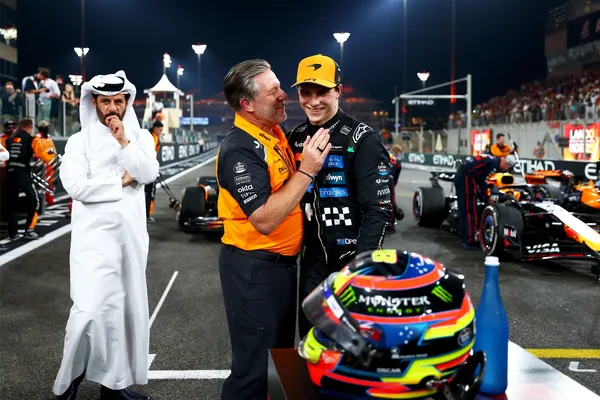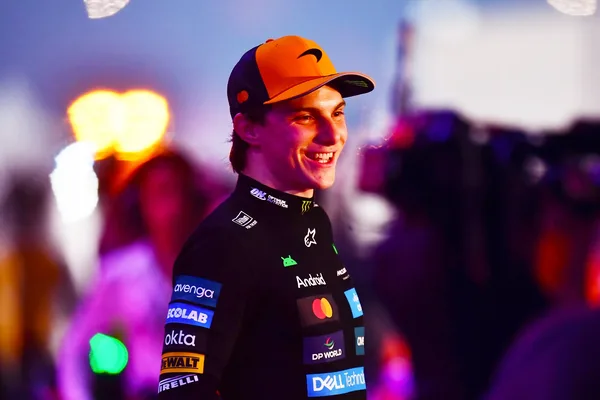An in-depth analysis of the F1® Sao Paulo GP 2022
Monday, 14 November 2022
Thanks to Versor, the official AI Partner of the Australian Grand Prix.
After coming agonizingly close on numerous occasions, Mercedes finally claimed their first victory of the season in the penultimate race at the Brazil Grand Prix, as George Russell took the next step in his young and promising career by taking home his first of potentially many race wins, after also winning the sprint race earlier in the weekend following a flawless drive. Russell’s teammate Lewis Hamilton finished in second place to secure a Mercedes 1-2 in what was far and away their most successful weekend of the season, whilst the Ferrari of Carlos Sainz rounded off the podium in third place setting up what should be a dramatic battle for second in the Constructors Championship between the Scuderia and the Silver Arrows as we head into the final Grand Prix of the season.
The Autódromo José Carlos Pace, more famously known as Interlagos, is a technically challenging 4.309 km circuit located just 15 km from the city centre of São Paulo, Brazil. The track features multiple banked corners, the famous Senna S at turns 1 and 2 (named after the legendary Ayrton Senna, who supervised the construction of that section) and multiple changes in gradient, with one of the highest elevation changes on the F1® calendar with the starting straight being the highest point leading to a steep descent towards Turn 5 which is the lowest section of the circuit.
Interlagos require a medium-to-high downforce setup due to its slow and bendy sections, however, high top speeds are still crucial for success, which means downforce levels can’t be run at maximum levels. As discussed in the previous post for the Mexico City Grand Prix, the altitude again plays a huge part in the weekend's proceedings, affecting downforce levels, cooling and the driver’s oxygen levels. Despite being not coming close to the altitude levels in Mexico, the altitude at São Paulo is still well above the rest of the F1® destinations. Despite these challenges, somewhat mercifully, Interlagos is one of the easiest tracks on brakes, with just six braking zones, of which only two are described as hard, meaning only around 15% of the lap is spent braking.
Following Russell’s victory in the sprint race and Sainz’s five-place grid penalty, which bumped Hamilton up to second on the grid, Mercedes secured a front-row lockout. Analysis of the race start into Turn 1 show that all of the top four drivers made clean starts and the positions remained as they were. The above plot shows that Russell was able to reach top speeds and higher throttle levels earlier than the other drivers.
However, the race's early stages were full of drama, beginning on lap one when Daniel Ricciardo and Kevin Magnussen collided, ending both of their races and forcing out a Safety Car. When the race resumed on Lap 7, the chaos continued with Max Verstappen and Hamilton colliding at Turn 2, then moments later, Charles Leclerc was sent into the barriers at Turn 7 by Lando Norris. Both Verstappen and Leclerc suffered damage, forcing them to pit early and all but ending any hopes of success for the two drivers at the top of the Championship standings.
Analysis of the race pace highlights Mercedes’ complete and utter dominance throughout the course of the race as they had their rivals Ferrari and Red Bull struggling to keep pace as seen clearly on Lap 45 when Hamilton breezed past Sergio Perez well before the braking zone of turn one to take second place. Both Russell and Hamilton were both able to maximise the performance of their tyres, with degradation almost being a non-factor relative to the rest of the field. Both Mercedes drivers were consistently setting faster lap times than their closest challenger Sainz, with the exception coming in the brief period between laps 38 and 48 after Sainz stopped for fresh medium tyres after both Russell and Hamilton had already made the same move many laps earlier. The undercut worked to perfection for Mercedes as both of their drivers quickly regained their pace advantage once they changed to a pair of used soft compound tyres.
It is difficult to pinpoint exactly where this level of dominance from Mercedes came from given that even in their most impressive outings prior to this they were still lagging well behind the Red Bulls for performance. One theory is that both Ferrari and Red Bull have decided to give up on any upgrades for this year’s car, instead choosing to focus their resources into developing next season’s package. Hamilton added to this stating “I don’t fully understand, like, we’ve definitely taken a step forward but it’s almost like the other two teams [Red Bull and Ferrari] have taken a step back. I don’t know if that’s right or not, but it definitely feels that way”. Whilst his teammate Russell has attributed the teams improvements to a reduction in the weight of the W13 as a result of fixing the aerodynamic issues which plagued Mercedes earlier in the season and led to their infamous porpoising problem. Russell added that “the car is a little bit slimmer than it probably was at the start of the year. So that’s a bit of free lap time we’ve gained”.
Another theory to explain Mercedes performance is that due to the unique nature of sprint weekends, the parc fermé conditions, whereby teams are unable to make adjustments to the suspension and aerodynamic configurations, begin much earlier than normal. During a normal Grand Prix weekend, parc fermé begins in qualifying after the teams have had three practice sessions to make changes and analyse data to find the ideal setup, however, during sprint weekends, there is just one practice session before qualifying and parc fermé begins. Many have speculated that in this much shorter than usual timeframe Mercedes found a setup that was much more suitable to the conditions when compared to their rivals.
The race once again received a spark of energy on Lap 52 when Norris’ car lost power, which ultimately led to another Safety Car. Once the race resumed on lap 60, Russell found himself in a tight battle with his teammate, ultimately holding off the seven-time World Champion to claim victory by over 1.5 seconds. Telemetry analysis of the battle between the two Mercedes drivers on lap 70 illustrates exactly where Russell held the advantage and crucially was able to keep Hamilton out of DRS range. Russell was over 3-tenths faster than Hamilton on this lap, posting a time of 1:14.515 compared to a 1:14.853. Russell made up most of this time advantage in Sector 2 where he was 0.363 seconds faster – 0:38.068 vs. 38.431; this huge time delta is largely attributed to the twisty section at Turns 7, 8 and 9 where Russell was an average of 12 km/h faster.
Whilst the stakes heading into next weekend’s season finale at Abu Dhabi are nowhere near as high as last year’s World Championship decider, there is still plenty to fight for in both the Driver’s and Constructor’s Championships. Perez and Leclerc are tied for second place, with both currently on 290 points. Meanwhile, just 19 points separate Ferrari and Mercedes in second and third place, respectively.




